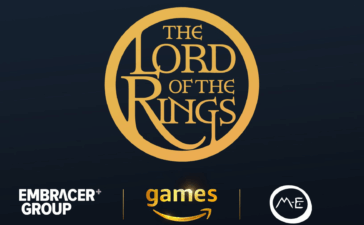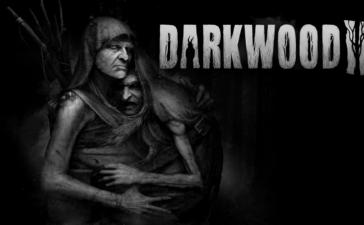From the first flickers of light on a CRT screen to today’s procedurally generated universes, gaming has always been about one thing, keeping players engaged.
In the 1950s, experimental titles like Tennis for Two and OXO explored what digital interaction could feel like. By the 1970s, arcades had transformed that curiosity into obsession. Pong wasn’t just a table-tennis simulator; it was a dopamine machine powered by simple timing and competition.
Half a century later, the mechanics behind that obsession have evolved, multiplied, and mutated. What started as a few lines of code bouncing a pixel across a black screen has turned into vast, adaptive systems designed to keep you playing just one more round.
The Roots of Retro Mechanics
Early games thrived under tight technical constraints. With minimal graphics and sound, developers had to make gameplay itself addictive. Pong (1972) delivered tension through perfect timing rather than complexity. Pac-Man (1980) added strategy and memory, asking players to outsmart ghosts while chasing points. Super Mario Bros. (1985) raised the bar, layering hidden secrets, perfect jumps, and instant feedback that taught players through failure.
Those limitations turned into design strengths. The result was accessible gameplay that demanded skill, rewarding repetition with mastery. Even now, when you jump into a modern indie hit or a rhythm-based challenge, that DNA is still there, a reminder that depth often comes from constraint.
Online Play and New Dynamics
The arrival of internet connectivity in the 2000s reshaped how players experienced mechanics. Games no longer ended when you turned off the console; they evolved while you slept. In the US, home consoles ruled, while Australia and New Zealand maintained a love for arcades and slot-style formats. Titles like World of Warcraft (2004) showed how real-time connections, cooperation, and loot systems could fuel endless play.
Online trends also introduced chance-based gaming systems, such as those described in The Escapist’s guide to online pokies i2n Australia, showing how gambling-style mechanics have evolved alongside mainstream play. Australians enjoy a wide variety, from classic three-reel slots to feature-rich video formats, progressive jackpots, and Megaways, each offering unique play styles, volatility, and payout potential.
Fast connections didn’t just make gaming faster, they made it social. Suddenly, every session could be streamed, shared, or spectated. Across genres, mechanics began blending unpredictability with teamwork and strategy, creating worlds where competition and community collided.
If you’ve ever wondered why people now trust esports figures more than athletes, that shift says it all. Gen Z trusts esports players more than sports stars.
Narrative and Interactive Growth
As technology advanced, storytelling became a mechanical tool in itself. Late-1980s home consoles brought deeper plots that shaped gameplay rather than sitting on top of it. Final Fantasy (1987, Square) gave players real influence through leveling systems and branching dialogue. Games weren’t just about winning anymore, they were about choosing how to play.
Animation-inspired titles added visual storytelling alongside action, as explored in Spotlight Report’s overview of animation in entertainment. By 1996, Super Mario 64 took the leap into 3D, giving players true spatial freedom. Moving platforms and environmental puzzles expanded how developers could teach and challenge players.
These titles laid the groundwork for modern cinematic experiences, where gameplay mechanics serve the story rather than compete with it. The idea that you could feel part of the narrative, through every jump, dialogue choice, or loss, became the new goal.
The Rise of Loot Boxes
Few mechanics have defined the modern gaming economy quite like loot boxes. According to Law Journal Digital, the model traces back to Japan’s mobile gacha games around 2007, where players paid for a chance at rare characters or items. By 2016, Overwatch had pushed loot boxes into the Western mainstream, blending anticipation and reward into a loop that was as much psychology as design.
Instead of fixed drops, loot crates offered cosmetics or boosts with rarity tiers, common, rare, legendary. “Pity timers” softened unlucky streaks, while the thrill of chance kept players coming back. Sports franchises borrowed the system for roster building, and live-service games tied rewards to seasonal events.
What made loot boxes controversial wasn’t just their resemblance to gambling, but their precision. They turned randomness into strategy, monetising engagement through small, frequent dopamine hits. As one Polygon analysis put it, “loot boxes aren’t games of chance, they’re games of patience.”
Modern Mechanics and Adaptability
Today, game design isn’t static. It learns from you. Artificial intelligence tailors difficulty and rewards to player behaviour, while procedural systems ensure no two runs are ever the same. Hades (2020, Supergiant Games) stands out as a masterclass, turning repetition into discovery by changing layouts, weapons, and dialogue with every attempt.
Innovation now stretches far beyond story and combat. Beat Saber (2018) tied rhythm to physical motion in VR, turning music into movement. Cross-platform play and live updates have blurred boundaries, keeping communities connected long after release.
Modern design thrives on data and player psychology. The goal isn’t just to challenge you, it’s to keep you engaged. When every player’s path is unique, replayability stops being a feature and becomes the foundation.
If you only have time for quick bursts, you’re not left out either, developers know it. That’s why even compact titles like those in The best games for short gaming sessions still deliver the same reward loops in smaller doses.
Where Mechanics Are Headed
Looking forward, the line between player and system will only get thinner. Augmented reality has already proven how digital and physical can merge — Pokémon GO (2016) turned the real world into a map of collectible dopamine hits. Neural interfaces are being tested for thought-driven inputs, while blockchain promises digital ownership of in-game assets.
Esports developers are refining spectator tools, letting fans experience matches with dynamic camera angles and live stats. Meanwhile, on the development side, energy-efficient coding is reducing hardware strain, widening access for players who don’t own high-end setups.
As design continues to evolve, expect future mechanics to merge retro-inspired simplicity with adaptive, data-driven depth. The next generation of games will likely anticipate how you play, maybe even how you feel.







